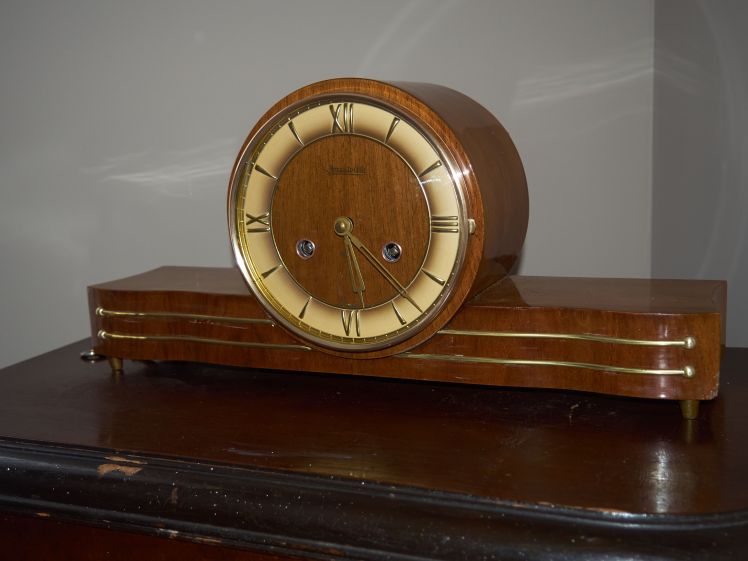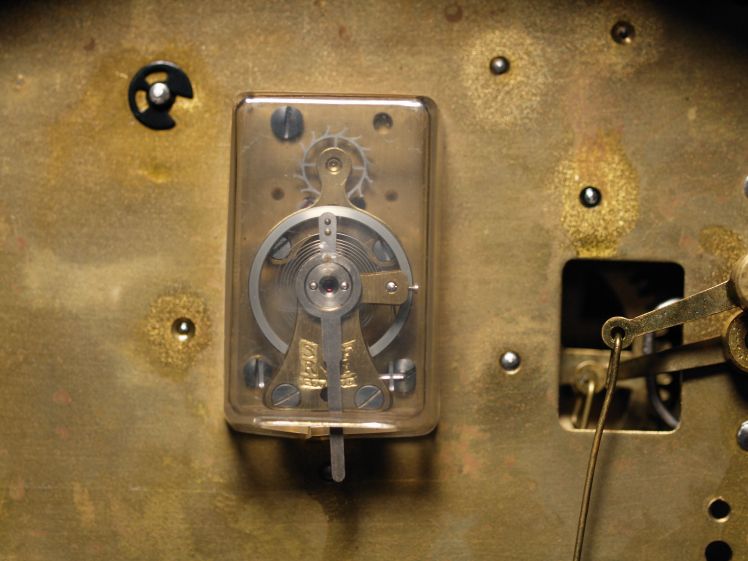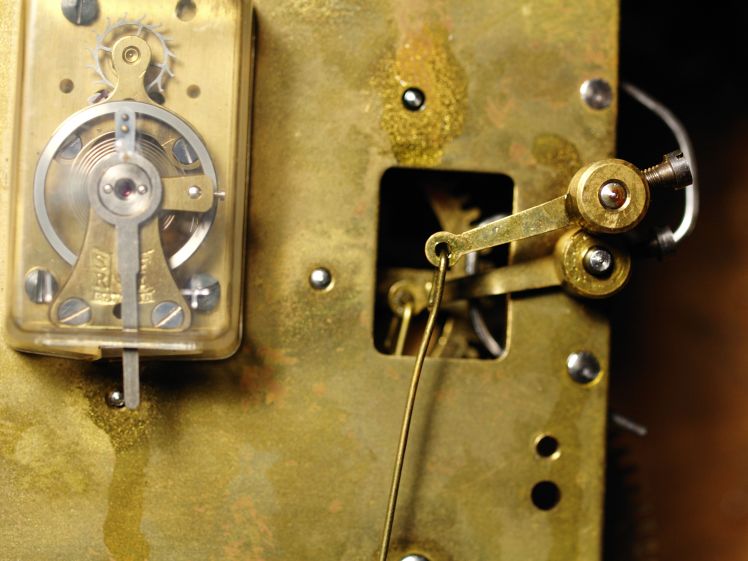If you are looking for clocks from the Black Forest region of Germany I hate to disappoint. This post is about the Forestville Clock Company of Canada.
Forestville clocks were assembled in Canada with foreign movements in local and foreign-made cases through the late 1920s to the mid-1970s. 
This Forestville mantel clock is not particularly special but it comes with a story.
We were on a visit to the Thousand Islands in 2013 and stopped at an antique store in Gananoque, Ontario. As my wife and I were browsing through the store I was drawn to the clock. I was somewhat familiar with the Forestville name as thousands of these were assembled by the Forestville Clock Company of Toronto. The price on the back was $175, a little too high I thought. We stayed overnight in the area and decided to return to the store the next day. There was a different clerk minding the store. I knew the price on the back but out of curiosity asked the clerk the price of the clock. Without checking he said $75 and I bought it. “You got a good deal”, he said after noticing the price on the back. I think he learned something that day.
History of the Blackforest Clock Company of Toronto
The Blackforest Clock Company of Toronto, Ontario was founded by Leopold and Sara Stossel in 1928. Both clock movements and complete clocks were imported from Germany and sold through department and jewelry stores across Canada. Their son Ed Stossel started working part-time with his parents’ company in the 1930s and later became a full-time employee in the late 1940s.
Some assembly work was carried out in their Wellington Street East factory. Initially imported mantel clock and grandfather clock movements were installed in cases made in Kitchener, but later the complete mantel clocks were imported from Germany. This arrangement was interrupted by the Second World War, which also led to a name change to the Forestville Clock Company in 1941. During the war years, this company imported its clock movements from England, the United States, and even France. However, starting in the mid-1950s German factories again became the source of most Forestville clocks, with Mauthe being a major supplier. (source: Canadian Clock museum)
The Forestville Clock Company was very successful during the middle decades of the twentieth century. Ed Stossel retired in 1979 and unfortunately, the company survived just a few more years under new leadership.

Both the movement and case were imported from Germany probably in the late 1960s or the early 1970s and the style reflects that period. There is a serial number on the backplate but it is not much help in dating the exact year the clock was made.

As clock manufacturers were searching for efficiencies, lever escapements replaced floating balances and pendulums in the 1960s and 1970s. I much prefer a pendulum clock but clocks such as this have the advantage of operating on surfaces that are not level.

This is a closeup of the strike lever mechanism.


The three strike rods give the clock a “bim-bam” sound on the half-hour. Not unique but disctinctive.
This mantel clock is handsome and has good lines. It is a great addition to my growing collection of antique and vintage clocks but it is dirty and needs to be cleaned.
I will save that task for another post.

I have a “Forestville” mantle clock from Germany in the 1930’s I believe. Movement #340-020. On the inside back door where the key hangs, there is a number 1/69/0 . Somebody scratched on the mechanisim what looks like “E9267? AR. Do you know if this is a valuable clock?
LikeLike
Hi and thanks for your comment. Without seeing a photo I can tell you that Forestville assembled clocks in Toronto, Canada beginning from 1928 when the company was called the Blackforest Clock Co. to the late 1970s. The numbers 67 or 69 might refer to the year your clock was made and the movement, a 340-020 was a very common time and strike movement sourced from Hermle, a German company. It should look like the one at this site. Again, without seeing the clock I would say they are not worth much. Thousands were made and mantel clocks tend to be the least describable among collectors unless they have special qualities which this one does not.
LikeLike
I have a Forestville mantle clock in an estate I am settling. The Forestville logo is under the 12 as expected, but above the 6, it says Waterbury. I can’t find any markings on the movement, but the key says made in England. The entire front of the clock opens to wind it, not just the glass piece. I haven’t been able to find another one like it. Can you please help me identify this piece?
LikeLike
Is your clock like this one? https://antiquevintageclock.com/2016/11/30/ingersoll-waterbury-mantel-clock-servicing-and-a-little-mystery-thrown-in-for-good-measure/
Ron
LikeLike
Hi. I have a Forestville Mantle clock.It has 5 2 64 stamped on the bottom.I imagine that is the date of manufacture as it was a gift to my Father in 1965. The back door has 3. 12 stamped inside. The movement has 563 etched on the back plate and the metal striking plate(?) has H72 stamped into it.
It gains about two minutes every week. My question is. There is a Black lever on the back of the movement which looks looks it could be adjusted.
LikeLike
Send photo(s) of the back of the movement to ronjoiner@gmail.com.
LikeLike
Sorry it took me so long to get back to you but I had to get my daughter to show me how
LikeLike
Learning is lifelong.
LikeLike